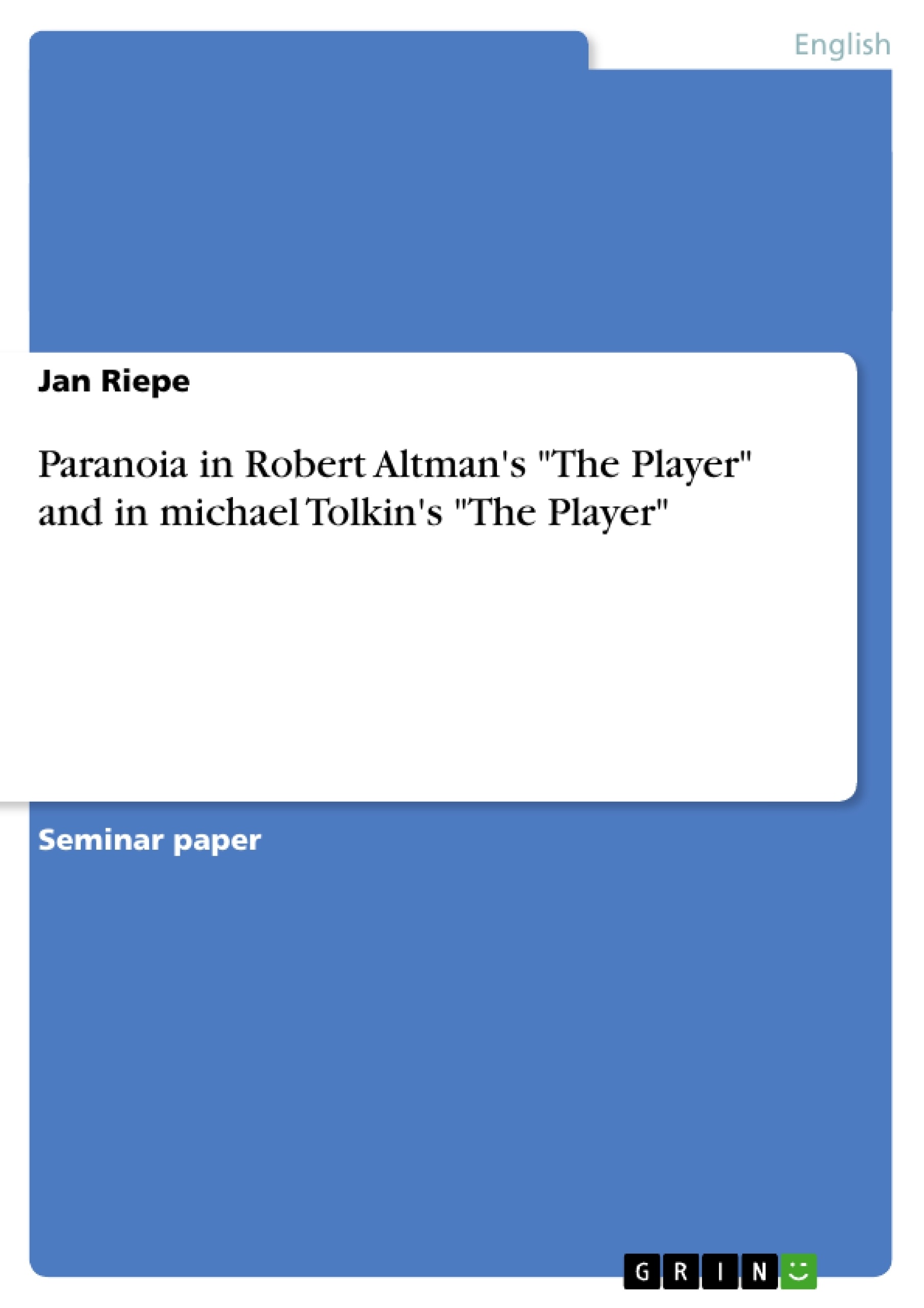This paper attempts to analyze the treatment of paranoia in Michael Tolkin's The Player and in Robert Altman's movie adaptation with the same title. Both works, the novel and its filmic adaptation, feature the paranoid protagonist Griffin Mill, a powerful movie executive who is plagued by an angry screenwriter. Now in this paper I shall examine how the novel and the movie apply their respective techniques to establish the fear and paranoia that drive Griffin all the way to murder. I will show that Griffin's paranoia is generated mainly by his powerful position in the movie industry. His paranoia absorbs him completely, leaving no room for a conscience or guilt. Even though this paper is not about film adaptation primarily, it is necessary to consider the general differences between literature and movies. Then, after a few words about the treatment of paranoia in film and literature in general, I will analyze Griffin's paranoia in both, the novel and the movie. Having done that I will show how his paranoia can be linked to his powerful position in the Hollywood movie industry.
The novel use language to tell a story, whereas movies use pictures, dialogue and sound to show their stories to the audience. While novels are restricted to the use of language, movies can make use of multi-media techniques. Movies can show a large amount of information with a single sweep of the camera. The camera can capture complex images in a few seconds that would take many pages of prose to describe. The novel in contrast can provide insight in a character's interior thoughts and emotions, it can use language to allow the reader a look inside the character's brain. Literature and Film have different qualities, which does not make one better than the other. Yet one aspect they share: "both [are] narrative in format". Narrative, the quality that both media have in common, is one of the reasons for the many novels that have been filmed. In fact, "well over half of all commercial films have come from literary originals", the practice of using a literary source for a movie is as old as the movie industry itself. This strategy is a very successful one, "even the film industry regards all of its greatest achievements as derived from novels".
Inhaltsverzeichnis (Table of Contents)
- Paranoia in Michael Tolkin's The Player and Robert Altman's The Player
- Literature and Film
- Paranoia in Literature
- Paranoia in Michael Tolkin's The Player
Zielsetzung und Themenschwerpunkte (Objectives and Key Themes)
This paper aims to analyze the depiction of paranoia in Michael Tolkin's novel "The Player" and its subsequent film adaptation directed by Robert Altman. The paper will focus on the character of Griffin Mill, a powerful movie executive plagued by an anonymous screenwriter, and how both the novel and film use their respective mediums to showcase Griffin's paranoia and its impact on his actions. The paper will also touch upon the general differences between literature and film in terms of narrative and storytelling techniques.
- The portrayal of paranoia in both literary and cinematic adaptations
- The influence of power and position on paranoia
- The impact of paranoia on a character's actions and decision-making
- The role of paranoia in modern society and its depiction in contemporary fiction
- The differences between narrative structures in literature and film
Zusammenfassung der Kapitel (Chapter Summaries)
- The paper begins by introducing the protagonist, Griffin Mill, and establishing his paranoid nature through his initial worries about his job security and his suspicion of an anonymous screenwriter. This paranoia stems from his desire to maintain his powerful position within the movie industry.
- The paper then delves into the general differences between literature and film, highlighting how novels and movies employ distinct techniques to present narrative and create meaning. This discussion emphasizes the importance of understanding these differences when comparing a novel and its film adaptation.
- The paper explores the concept of paranoia in literature, specifically focusing on its portrayal in American fiction, particularly during and after the Cold War. This section discusses how paranoia is often associated with conspiracy theories, power structures, and the anxieties of modern life.
- The paper then examines Griffin Mill's paranoia in greater detail, analyzing specific passages from the novel that reveal his anxieties about losing his reputation and his growing fear of being caught and punished for his actions. This section demonstrates how paranoia gradually consumes Griffin, leading him to make irrational decisions and ultimately drive him to commit murder.
Schlüsselwörter (Keywords)
The paper focuses on the themes of paranoia, power, film adaptation, narrative techniques, and modern society. Key terms include: paranoid protagonist, Griffin Mill, "The Player," conspiracy theories, social paranoia, movie industry, power dynamics, literary and cinematic adaptation, narrative structures.
- Citar trabajo
- M.A. Jan Riepe (Autor), 2004, Paranoia in Robert Altman's "The Player" and in michael Tolkin's "The Player", Múnich, GRIN Verlag, https://www.grin.com/document/38365



